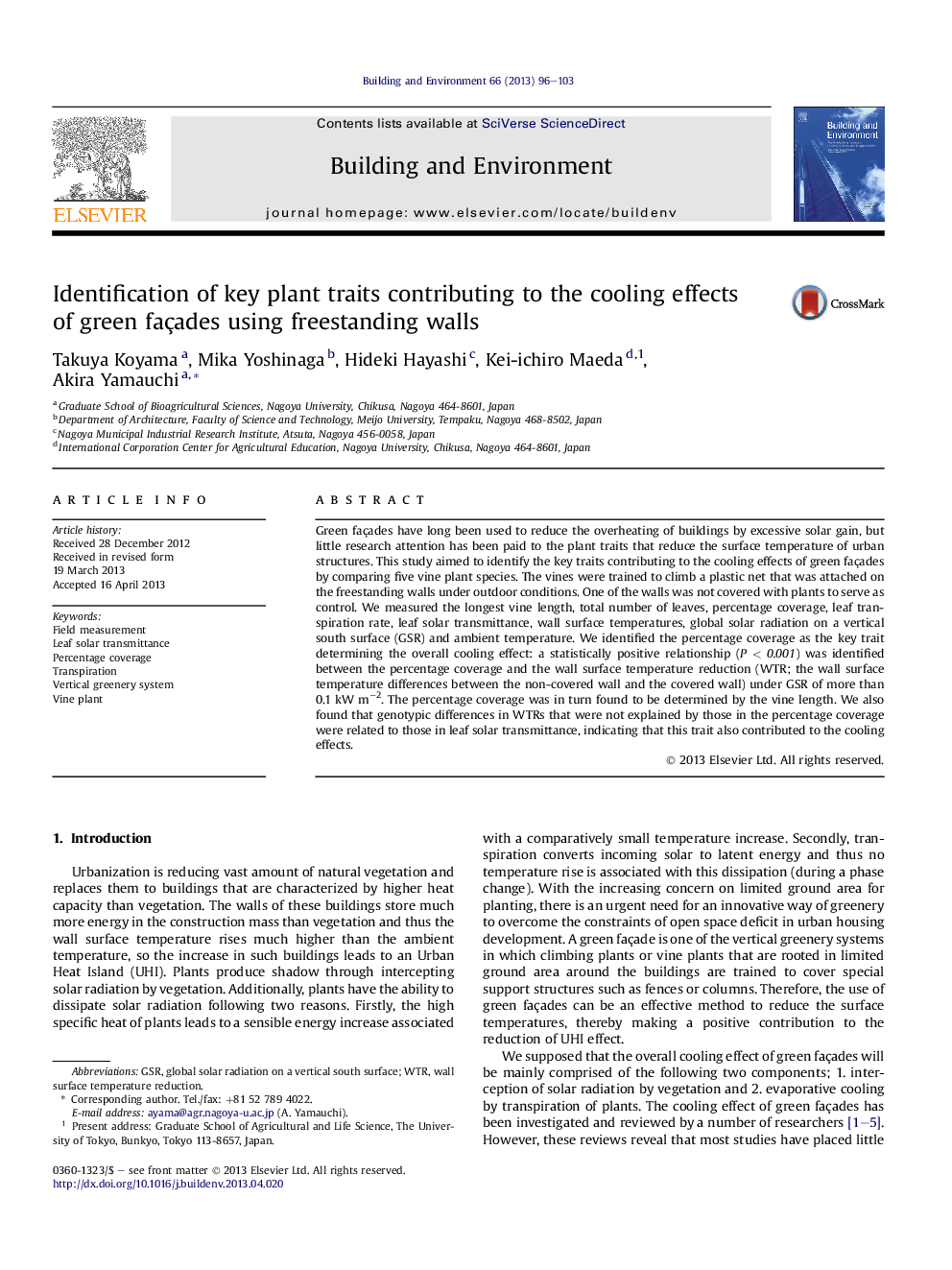| Article ID | Journal | Published Year | Pages | File Type |
|---|---|---|---|---|
| 248355 | Building and Environment | 2013 | 8 Pages |
•We identified the plant traits contributing to the cooling effects of green façades.•Percentage coverage was the key trait reducing the wall surface temperatures.•The developmental trait of vine length determined the percentage coverage.•Leaf solar transmittance also contributed to the cooling effects.
Green façades have long been used to reduce the overheating of buildings by excessive solar gain, but little research attention has been paid to the plant traits that reduce the surface temperature of urban structures. This study aimed to identify the key traits contributing to the cooling effects of green façades by comparing five vine plant species. The vines were trained to climb a plastic net that was attached on the freestanding walls under outdoor conditions. One of the walls was not covered with plants to serve as control. We measured the longest vine length, total number of leaves, percentage coverage, leaf transpiration rate, leaf solar transmittance, wall surface temperatures, global solar radiation on a vertical south surface (GSR) and ambient temperature. We identified the percentage coverage as the key trait determining the overall cooling effect: a statistically positive relationship (P < 0.001) was identified between the percentage coverage and the wall surface temperature reduction (WTR; the wall surface temperature differences between the non-covered wall and the covered wall) under GSR of more than 0.1 kW m−2. The percentage coverage was in turn found to be determined by the vine length. We also found that genotypic differences in WTRs that were not explained by those in the percentage coverage were related to those in leaf solar transmittance, indicating that this trait also contributed to the cooling effects.
